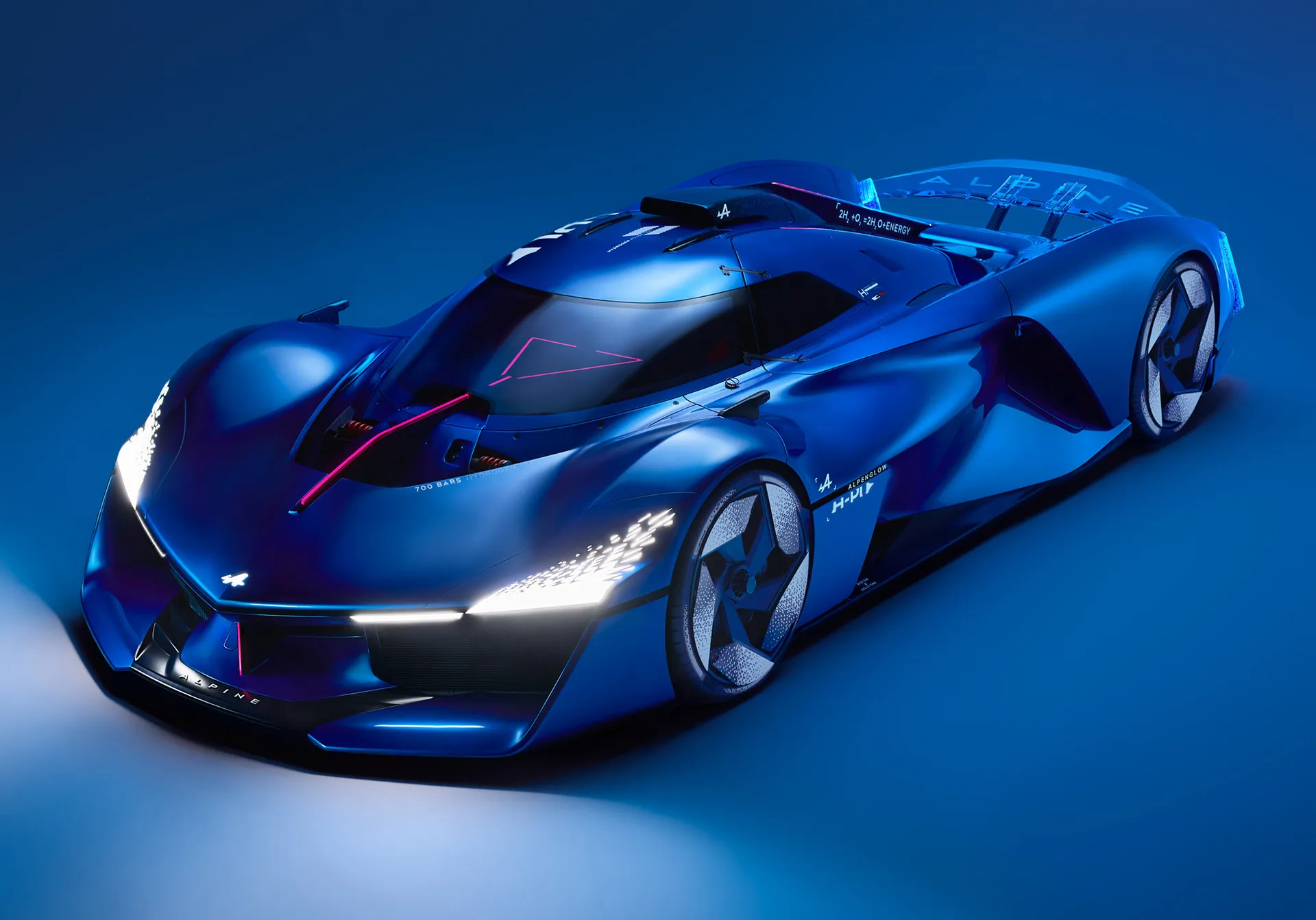Alpine, a French performance brand, has unveiled the revised Alpenglow hypercar concept that will compete on Saturday at Spa-Francorchamps circuit in Belgium.

The race will take place in tandem with the Six Hours of Spa-Francorchamps, the third round of the 2024 World Endurance Championship, in which Alpine will be competing with their A424 LMDh race car in the elite Hypercar class.

The revised idea, known as the Alpenglow Hy4, is not intended for racing. Its only purpose in conducting demonstration runs is to showcase the hydrogen engine’s performance capability. Additional test sessions are scheduled for the mid-June 24 Hours of Le Mans.

In addition to serving as a preview of the new design language anticipated for Alpine’s upcoming portfolio, the original Alpenglow concept also served as a demonstration of an internal combustion engine made to burn hydrogen. The 2.0-liter 4-cylinder engine in the Alpenglow Hy4 has a 335 horsepower rating; however, Alpine stated that a more potent V-6 is being built in preparation for its release later this year.


In addition, the Alpenglow Hy4’s design has evolved greatly from the first concept to something that more closely resembles a production vehicle. A roof scoop, individual headlamps rather than just a front light bar, a more straightforward front fascia design, and a real cabin with two seats are all present.


Although Alpine has not officially announced its intentions to produce a hydrogen-powered vehicle, the Alpenglow Hy4 idea indicates that the company is prepared in case hydrogen fuel becomes a popular option. When hydrogen is burned, no carbon emissions are released, in contrast to gasoline. Although there are methods to reduce the amount of nitrogen oxides, such as by employing diesel engines’ urea-based selective catalytic reduction, there are still dangerous nitrogen oxides.


In order to maintain internal combustion engines in a world with zero carbon emissions, several automakers and motorsports organizations are looking at hydrogen. This is because hydrogen emits no carbon. E-fuels with no carbon footprint are another way to preserve internal combustion engines. CO2 that has been drawn from the atmosphere is combined with hydrogen to create these fuels.


In 2026, Formula 1 intends to provide a sustainable fuel option, perhaps based on e-fuels. Additionally, by the same date, the 24 Hours of Le Mans organizer, the ACO, hopes to launch a class specifically designed for race cars driven by hydrogen.


The MissionH24 hydrogen-electric idea, which included an electric driving system principally fueled by a hydrogen fuel cell stack, was presented by the ACO last year. On Saturday, the MissionH24 concept will also be tested at the Spa circuit. Ferrari has been found to have copyrighted the design for a hydrogen engine, while Toyota also unveiled the GR H2 Racing concept, a race car driven by a hydrogen engine, last year.


Alpine will concentrate on electric vehicles in the interim to reduce emissions as it watches the development of hydrogen as a potential fuel source in the future. Later this year, the A290 hot hatch will be the company’s first electric vehicle (EV).